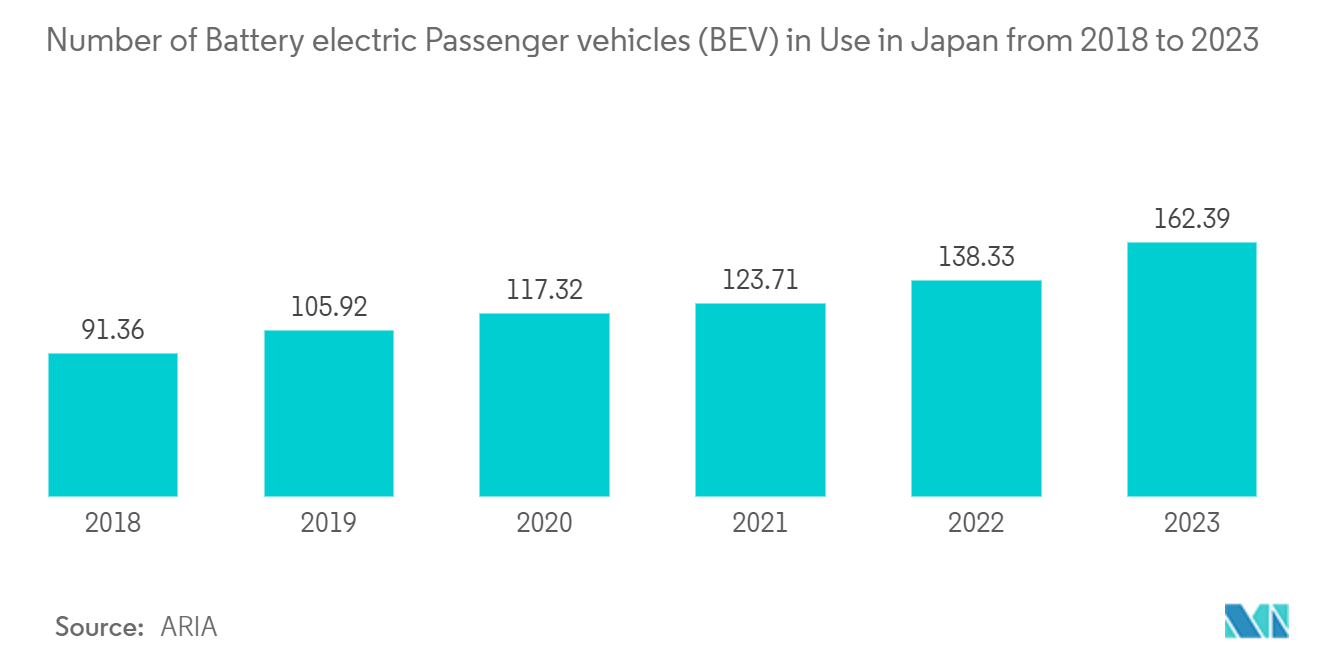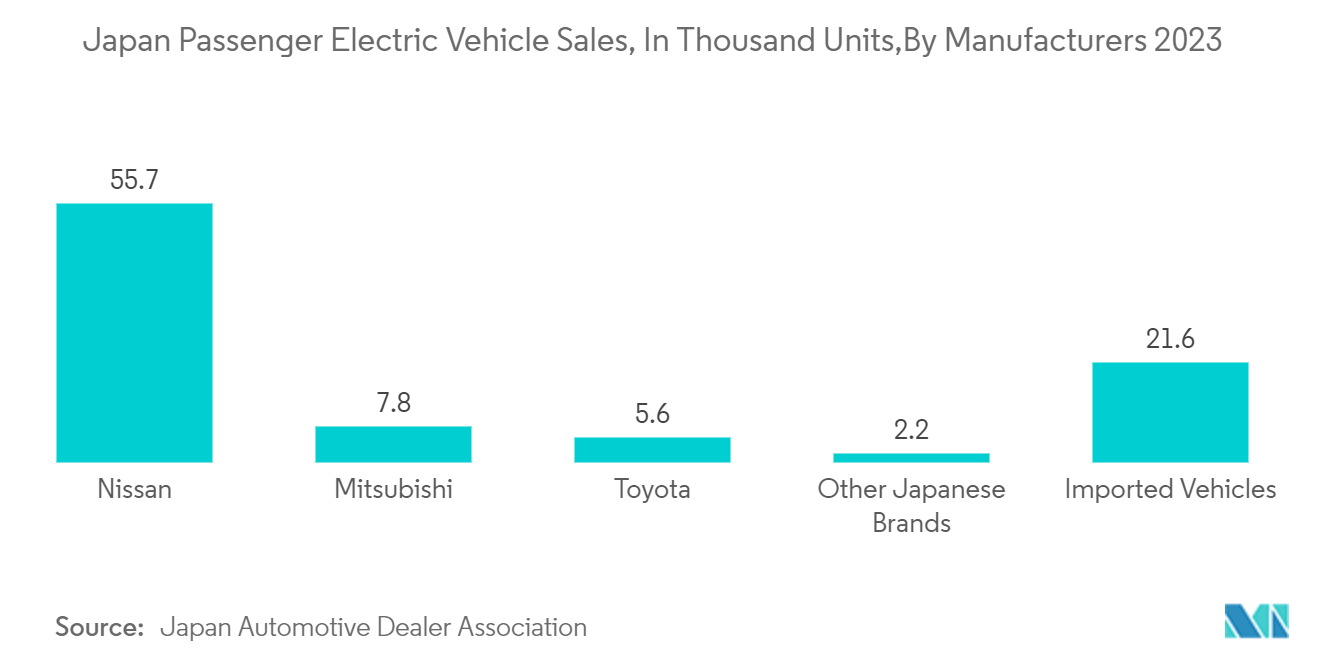Market Trends of Japan Electric Vehicle Charging Equipment Industry
Public Charging is Expected to Fuel Market Growth in Upcoming Years
Public charging stations are essential for meeting the charging needs of electric vehicle owners, particularly those without access to home charging facilities. In Japan, where many residents live in urban areas or apartments with limited parking space, public charging is often the primary option for EV owners. Additionally, tourists and visitors require public charging infrastructure to support their electric vehicles while traveling around the country.
The rise in carbon emissions produced by the transportation sector has propelled the focus on the environment across Japan. Thus, the Japanese government is encouraging the adoption of electric vehicles, like HEVs, PHEVs, and BEVs. As a result, the number of EVs on the road has been constantly increasing. This is expected to drive the demand for EV charging infrastructure.
Public charging stations are strategically located in high-traffic areas such as shopping centers, restaurants, tourist attractions, and transportation hubs. This ensures that EV owners have easy access to charging facilities while carrying out their daily activities or traveling. Public charging stations are often integrated into existing infrastructure, such as parking lots or service stations, maximizing convenience for users.
China, the United States, Germany, India, and Japan are the five largest passenger car markets globally. Japan, and several other countries globally have committed to net zero-emission passenger car sales. In December 2020, the Japanese government introduced a green growth strategy to make Japan carbon-neutral by 2050. This strategy includes promoting the adoption of EVs, FCEVs, PHEVs, and hybrid vehicles.
With these implementations, Japan aims to reduce the impact of emissions by the transportation sector to achieve the GHG (green house gas) reduction goals under the Paris agreement.The concentration of charging stations in Japan is lesser than other developed countries, which indicates massive growth potential in the coming years.

DC Charging Stations is Dominating the Market
DC charging stations are known for their rapid charging capability enabling electric vehicle owners to recharge their vehicles quickly and conveniently. Unlike AC (alternating current) charging, which typically takes several hours to fully charge an EV battery, DC fast chargers can deliver a significant charge in a much shorter time frame, making them ideal for on-the-go charging needs.
DC charging stations are strategically located in high-traffic areas such as highways, major thoroughfares, commercial centers and rest stops, providing convenient access to fast charging for electric vehicle owners. This widespread deployment of DC fast chargers ensures that EV drivers can recharge their vehicles quickly and efficiently while traveling or running errands, which addresses range anxiety, therby promoting the adoption of electric vehicles.
Advancements in EV charging technology have contributed to the proliferation of DC fast chargers in Japan. The introduction of standardized charging protocols such as CHAdeMO and CCS (combined charging system) ensures interoperability and compatibility among different EV models and charging networks. The integration of smart charging features enables real-time monitoring, payment options, and reservation systems, enhancing user experience and convenience.
The three types of chargers available for EVs include the standard 120V plug (often used for home appliances and charges slowly but can fill a battery to near-full capacity in about 8 to 12 hours, the 240V level-2 chargers, which generally provide 20 to 25 miles worth of charge in an hour, with a shortened charging time to eight hours or less, and level-3 direct current (DC) fast chargers that can charge a battery up to 80% in 30 minutes.
At homes, level-2 chargers need the same type of outlets required for clothes dryers or electric ovens.
Auto manufacturers use all three different varieties of DC fast chargers as per their requirements. The SAE combined charging system (CCS) is used by most manufacturers. Nissan and Mitsubish use the CHAdeMO variant. The Tesla Supercharger is used by only Tesla cars. This lack of vehicle compatibility restricts universal vehicle access to charging stations and could hinder market growth.
Deploying high-powered energy chargers must be done carefully to ensure stations have high utilization. The profit potential of charging stations is quite low in the current scenario. The profitability may only increase when there are enough electric cars on the road, so the infrastructure could have a high utilization rate.
Collaborative efforts among stakeholders and continued innovation in charging technology are key to realizing the full potential of DC charging stations in supporting Japan's transition to a sustainable transportation system driven by EVs.



